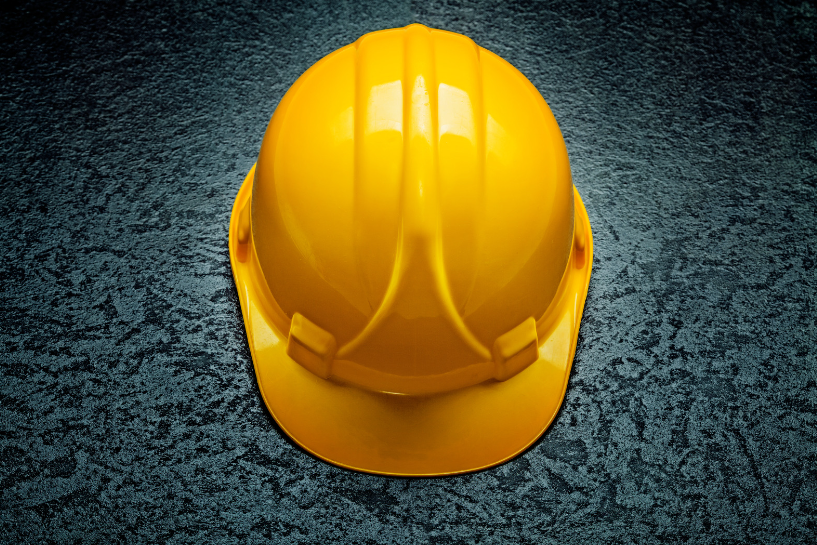About Us
How to Choose the Right Safety Helmet for Your Job

1. Understand the Types of Safety Helmets
Safety helmets come in various types, each designed to address specific hazards and job requirements. The primary types include:
- Type I Helmets: Designed to protect against vertical impacts and penetration, commonly used in construction and manufacturing.
- Type II Helmets: Provide protection against both vertical and lateral impacts and penetration, ideal for environments where side impacts are a concern, such as utilities and forestry.
- Class G (General): Helmets that offer limited voltage protection (up to 2,200 volts), suitable for general construction and industrial work.
- Class E (Electrical): Helmets that provide high voltage protection (up to 20,000 volts), necessary for electrical work and utilities.
- Class C (Conductive): Helmets that do not offer electrical protection but provide impact and penetration resistance, often used in industries where electrical hazards are not present.
2. Assess the Job Hazards
Different job environments present unique hazards that dictate the type of helmet required. Conduct a thorough risk assessment to identify the potential dangers in your workplace. Consider the following hazards:
- Impact Hazards: Falling objects, tools, or materials.
- Penetration Hazards: Sharp objects that could penetrate the helmet.
- Electrical Hazards: Exposure to live wires or high voltage areas.
- Lateral Impacts: Risks of side impacts from moving equipment or structures.
3. Choose the Right Helmet Material
Safety helmets are made from various materials, each offering different levels of protection, durability, and comfort:
- Polyethylene (PE): Lightweight and economical, offering good impact resistance.
- Fiberglass: Strong and durable, providing high impact and penetration resistance, but can be heavier.
- Polycarbonate: High impact resistance and good for electrical insulation, often used in Class E helmets.
4. Consider Comfort and Fit
A helmet that fits well is more likely to be worn consistently and correctly. Look for helmets with adjustable suspension systems that allow you to customize the fit. Key features to consider include:
- Adjustable Headbands: Ensure the helmet fits snugly without being too tight.
- Padding: Provides additional comfort, especially for long hours of wear.
- Ventilation: Helmets with ventilation slots can improve air circulation and keep the wearer cool.
- Weight: A lighter helmet can reduce strain and fatigue during prolonged use.
5. Look for Additional Features
Modern safety helmets come with various additional features that enhance protection and usability:
- Chin Straps: Ensure the helmet stays securely in place, especially in high-movement environments.
- Face Shields: Provide additional protection for the face and eyes against debris, chemicals, and other hazards.
- Earmuffs: Integrated hearing protection for noisy environments.
- Reflective Strips: Enhance visibility in low-light conditions.
6. Ensure Compliance with Standards
Always choose safety helmets that comply with relevant safety standards. In the United States, look for helmets that meet ANSI/ISEA Z89.1 standards. In Europe, helmets should comply with EN 397. These standards ensure that the helmet has been tested and certified to provide adequate protection.
7. Regular Inspection and Maintenance
Once you have chosen the right safety helmet, regular inspection and maintenance are crucial to ensure ongoing protection:
- Inspect Before Use: Check for cracks, dents, or any signs of wear and tear.
- Clean Regularly: Use mild soap and water to clean the helmet, avoiding harsh chemicals that could degrade the material.
- Replace When Needed: Follow the manufacturer's guidelines for helmet replacement, typically every 2-5 years, depending on use and exposure to elements.
Conclusion
Choosing the right safety helmet is a critical step in protecting yourself from potential head injuries in the workplace. By understanding the different types of helmets, assessing job hazards, considering comfort and fit, and ensuring compliance with safety standards, you can select the best helmet for your specific needs. Remember, a well-chosen safety helmet not only provides protection but also contributes to overall job performance and safety culture.



